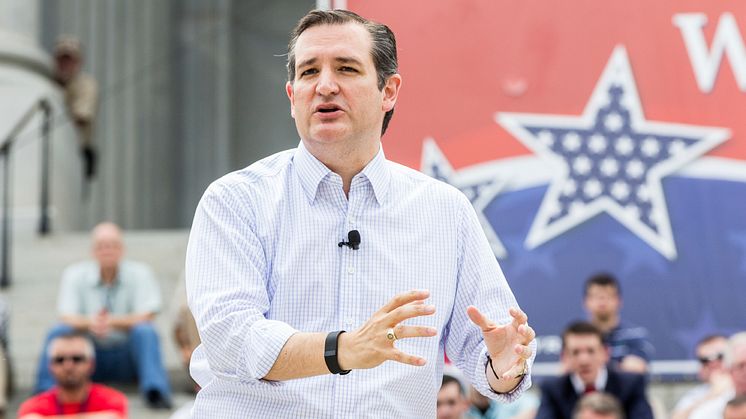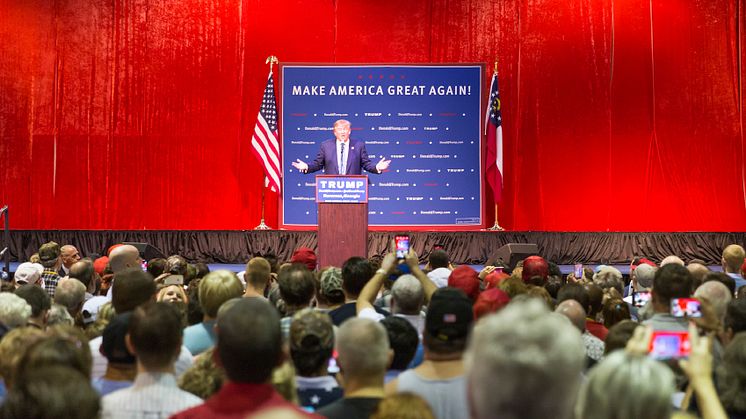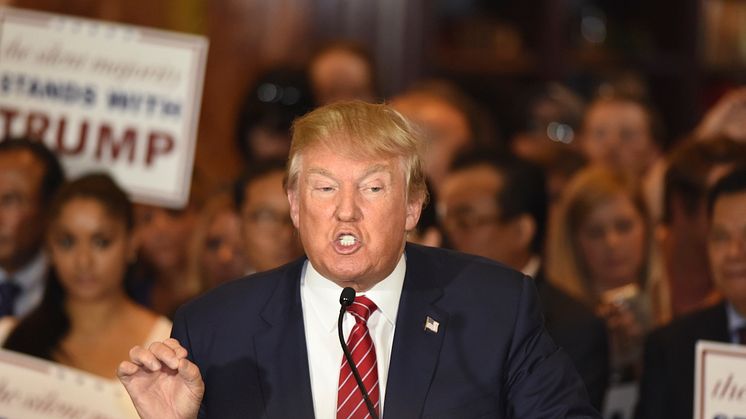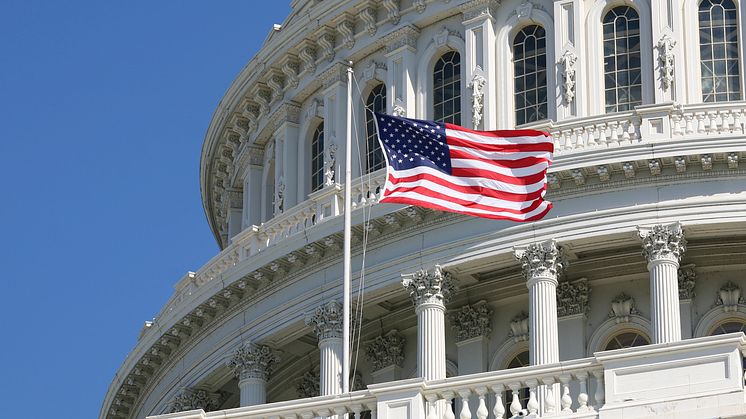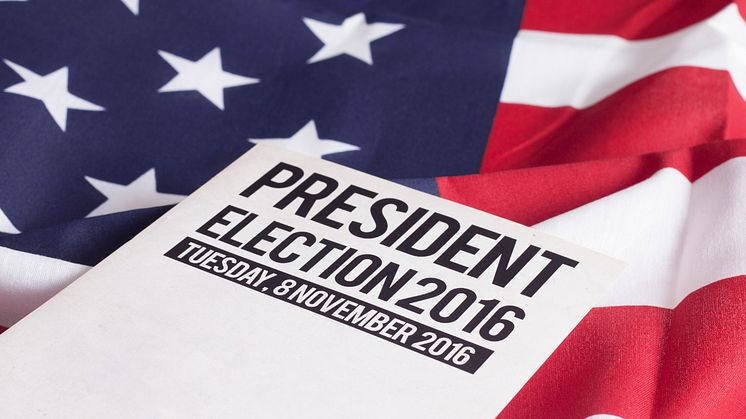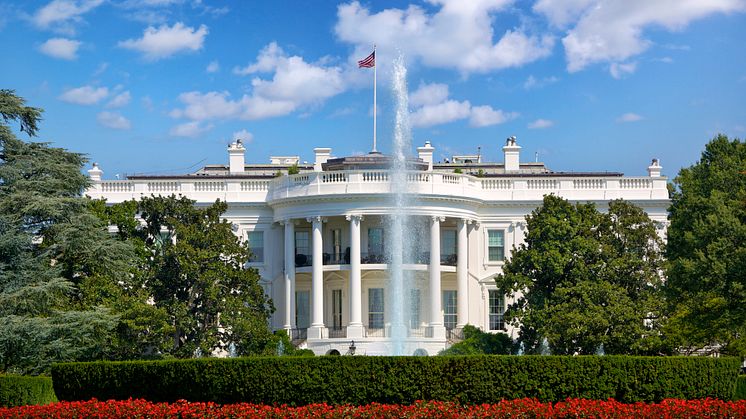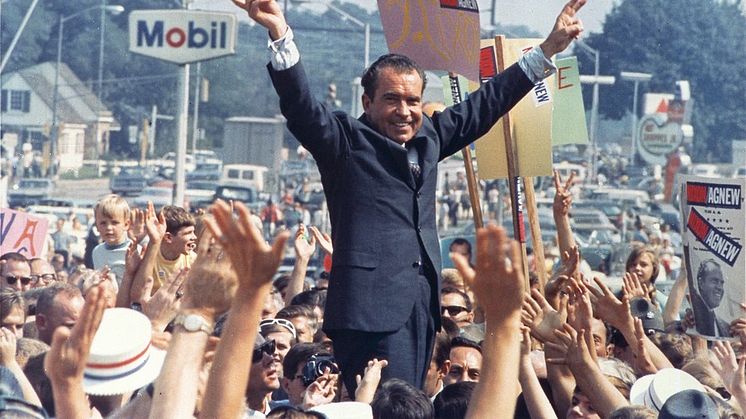
Press release -
COMMENT: Embracing the ‘silent majority’ – Donald Trump brings back the worst of 1960s America
Randall J Stephens, Reader in History (American Studies) at Northumbria, writes about American politics for The Conversation.
Violence flared up again at a “New York Values” Donald Trump rally on April 10, as backers of the Republican candidate reportedly assaulted a black protestor. Several hundred protesters milled about near another Trump rally in Berlin, Maryland, on April 20. They were ready to face off with their Trump-supporting advesaries that had poured into a local high school for a rally. On the face of it, aberrations – but these sorts of episodes are now so common at Trump events that they’re rarely flattered with headlines any more.
Violent outbursts and angry shouting matches at Trump campaign stops are just one sign of how sharply divided Americans are today. And Trump’s success at exploiting America’s dire polarisation is eerily reminiscent of the radical right of the 1960s.
When he calls into question Obama’s US citizenship, calls Democratic candidate Bernie Sanders a communist, or questions the safety of vaccines, Trump sounds uncannily like a member of the John Birch Society, a still-extant conservative advocacy organisation that spent much of the 1960s looking for “reds” around every corner. Bob Dylan expertly trolled its members in his song Talkin' John Birch Paranoid Blues.
Birchers decried the supposed communist conspiracies of the Supreme Court and the fluoridation of water. The latter, they railed, was a commie plot. The society’s founder, Robert Welch, even condemned president Eisenhower for what he viewed as his communist sympathies.
The John Birch Society mirrored the growing cultural and political divides of its heyday in much the same way today’s Trumpeters do. In late March 2016, the Pew Research Center reported: “The 2016 presidential campaign has exposed deep disagreements between – and within – the two parties on a range of major policy issues.” Its pollsters found that these “divisions go well beyond the issues and extend to fundamentally different visions of the way that life in the United States has changed”.
It’s all a political and cultural flashback to the turbulent 1960s. Many raging Americans are looking to Trump to “Make America Great Again”, just as angry white “hard-hat conservatives” looked to Republican Richard Nixon to reestablish “law and order” and to take their country back from liberal politicians, minorities, and unwashed hippies.
Not so silent
The 2016 GOP frontrunner has been shamelessly borrowing from the Nixon playbook, using a Nixonian phrase to rally diehard, disenchanted conservatives: “It’s a term that I haven’t heard for years,” Trump intoned at a rally in Phoenix last summer. “But I really think it applies now more than maybe ever before, and that’s the term ‘the silent majority’… But the silent majority is back, and we’re going to take the country back.”
The crowd cheered boisterously. As Nixon used the phrase in 1968, so does Trump now in 2016. The silent majority was code for all those whites who were tired of civil rights protesters in the streets and anti-war agitators on college campuses. When Trump fumes about Mexican rapists or calls president Obama a “loser,” the so-called silent majority roars with approval.
At the same time, Trump’s know-nothing isolationism, his hard-right posturing on immigration, and his resort to violent rhetoric would be enough to make Nixon blush. The 37th president was too much of a politician to say whatever popped into his head at a rally or in an interview with reporters. He reserved most of his rants, raves, scheming, and profanity-laden sessions to the inner sanctum of the White House.
When Trump, by contrast, was asked on MSNBC who he was consulting on foreign policy, he confidently responded: “I’m speaking with myself, number one, because I have a very good brain and I’ve said a lot of things.” Nixon was too savvy, even in the heat of the culture war, to have lapsed into the rambling, narcissistic word salad that Trump has made his hallmark.
But there’s a more bilious 1960s parallel available too: the white supremacist Alabama governor and expert race-baiting populist George Wallace, Trump’s true 1960s antecedent.
By whatever means necessary
Wallace ran as an independent in the critical election year of 1968. As a young man, the scrappy, hot-tempered Wallace won boxing’s Golden Gloves bantamweight division for Alabama. Were he alive today, he would appreciate Trump’s macho grandstanding. “I’d like to punch him in the face,” groused Trump of a protester at a Las Vegas rally in February.

At Wallace’s rallies, which featured blaring honky-tonk music and large, billowing confederate flags, there was a fare share of jaded anti-war and civil rights activists there in protest. Some dressed like Nazis and offered mock salutes to Herr Wallace. His white audiences got into yelling matches with hippies. Shouted down by protesters, the Alabaman would step away from the microphone and mutter profanities at his long-haired opponents.
After a protester laid down in front of president Johnson’s motorcade, Wallace offered his two cents. “I wanna tell you, if you elect me the president,” he famously thundered, when “some of them lie down in front of my automobile it’ll be the last one they ever wanna lie down in front of!”
Trump’s rallies have a similarly extreme atmosphere, with violent scuffles between flag-waving, jingoistic Trump supporters and furious demonstrators. Team Trump thrives on chest-thumping, threats, and intimidation. Campaign ally Roger Stone, who launched his political career in 1972 by working for Nixon’s infamous Committee to Re-Elect the President (CREEP) and has Nixon’s face tattooed on his back, is using his finely-tuned skills in advance of this summer’s Republican convention in Cleveland, Ohio. Responding to the possible stealing of the election away from Trump, Stone recently claimed: “We’re going to have protests, demonstrations.” He added:
We will disclose the hotels and the room numbers of those delegates who are directly involved in the steal. If you’re from Pennsylvania, we’ll tell you who the culprits are. We urge you to visit their hotel and find them.
And then there’s Trump’s campaign manager, Corey Lewandowski, who has really brought the know how of a 1960s-style political street fighter to the race. Lewandowski allegedly grabbed a female journalist at a rally in Florida and then lied about it. Trump mostly stood by him. Only now is anew operative displacing the hotheaded Lewandowski. Still, the whole thing would make Wallace proud.
There are differences. Wallace was a cornbread, neo-confederate white supremacist, whereas Trump is a crass, European-style ethno-nationalist. Wallace only garnered 13.5% of the popular vote in 1968 and really only did well in the Deep South; as of now, Trump is still the top Republican candidate. But for all of their differences, they share a preternatural ability to mobilise voters with hate, to stoke red-hot resentments, and to convince disenchanted white voters that their country has been taken away from them and they need to take it back – by whatever means necessary.
This article was originally published on The Conversation. Read the original article.
Topics
Categories
Northumbria is a research-rich, business-focused, professional university with a global reputation for academic excellence. To find out more about our courses go to www.northumbria.ac.uk
If you have a media enquiry please contact our Media and Communications team at media.communications@northumbria.ac.uk or call 0191 227 4571.







